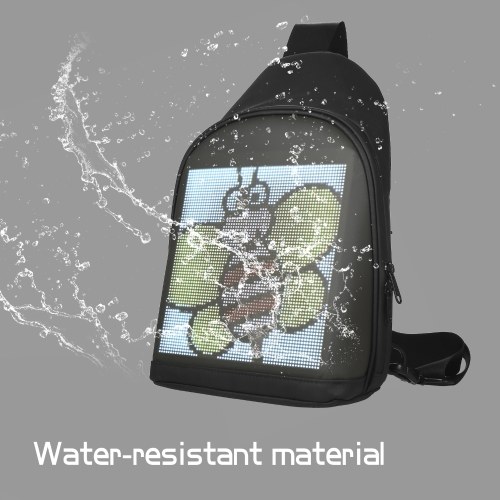Gratis
Apoyo

Step aboard the colourful Magical Mystery Tour bus for a fun and fascinating two hour tour of Beatles Liverpool. You’ll see all the places associated with John, Paul, George and Ringo as they grew up, met and formed the band that would take the music world by storm. Ticket Includes: Two hour live-guided Magical Mystery Bus Tour, with photo stops FREE general admission to the Cavern Club in the evening of your tour date. (Large parties will be admitted to the venue at the discretion of the door staff. At busy times entrance cannot guarantee entrance) Ticket Excludes: Please note the Cavern Club offer does not include entrance for ticketed shows in the Cavern Live Lounge. Gratuities Food & Drink Highlights: See the Beatles childhood homes, schools and colleges and get up close to places that inspired some of their most memorable songs – Penny Lane and Strawberry Field. You’ll be kept entertained along the way by one of our professional Beatles Guides and some Fab Four tunes. The tour finishes at the legendary Cavern Club where you can enjoy live music every afternoon from the Cavern’s resident musicians. Itinerary: The tour lasts 2 hours and includes the following locations with stops for photos on the way: Childhood home of Ringo Starr George Harrison’s birthplace (passengers get off the bus here) Penny Lane (passengers get off the bus here) St Peter’s Church Hall (where John and Paul met for the first time) Strawberry Field (passengers get off the bus here to see the famous gates) John Lennon’s childhood home Paul McCartney’s childhood home (passengers get off the bus here) Former schools and colleges of John, Paul, George and Ringo including the Art College and the Liverpool Institute (now LIPA) Many more Beatles locations will be pointed out as you travel around the city centre and suburbs. Good to Know: Tours start at the Albert Dock – meet your guide at the Ticket Office just a few metres from where you will get on board the colourful Magical Mystery Tour coach for an unforgettable 2 hour tour. Tours finish at the legendary Cavern Club. If you have time of some sightseeing, why not save some money with our Magical Mystery Tour + British Music Experience combo deal? If you're a huge Beatle fan, why not combine your visit with The Beatles Story Museum. Or see Liverpool’s most iconic sights aboard the world-famous Mersey Ferry!
Su día empezará con el autobús recogiéndole en su hotel de Las Vegas en un autocar de lujo. Hará un paseo a través del Desierto de Mojave y las Black Mountains así como los Grand Wash Cliffs de Arizona en el camino. En ruta hacia el Gran Cañón, su guía le irá narrando los hechos históricos más interesantes y curiosos de la zona acerca de los exploradores españoles, las numerosas culturas nativas y los primeros colonos que hicieron sus asentamientos desde el norte de Arizona. A su llegada, podrá disfrutar de un delicioso almuerzo en el National Geographic Visitors Center, donde también podrá encontrar suvenires antes de ir hacia el Parque Nacional del Gran Cañón. Una vez en el Parque Nacional del Gran Cañón estará varias horas haciendo turismo y explorando. Verá diferentes panorámicas desde diferentes localizaciones mientras aprende acerca de la historia y geología del cañón con su experto guía. Incluye: Incluye servicio complementario de atención y de traslado desde la mayoría de hoteles situados en Strip o en el centro de la ciudad. Almuerzo en el Centro de Visitantes National Geographic y el Teatro IMAX Entrada al Gran Cañón y el Centro de Visitantes Parada para descansar en Kingman AZ Tour en autobús totalmente narrado hasta el Gran Cañón South Rim y el National Geographic Center de las Vegas ¡Una parada en la Presa Hoover! Una maravilla de la ingeniería. Disfrute de una parada de 20 minutos y una oportunidad de hacer excelentes fotografías. Descubra el volcán extinto Fortification Hill Visite el punto más hondo y ancho del Gran Cañón South Rim (más de 2 km y medio de hondo y 34 km de ancho
Travel in comfort aboard our luxury motor coaches all of our Motor Coaches are equipped with restrooms, television, reclining seats, large picturesque windows, and air conditioning. All motor coaches are DOT-Certified. Your tour will begin with a photo stop of the Hoover Dam taken from the amazing O’Callaghan-Tillman Bridge, with enough time to enjoy the majesty of this engineering masterpiece, take some photos, then back on the road to the Grand Canyon. On your way to the Grand Canyon you will be going past an extinct volcano "Fortification Hill" Your driver / guide will provide expert narration throughout your tour. You will enjoy a 30 minute helicopter flight over the Dragons Corridor which will show you the most spectacular views of the ancient geological rock formations of the Grand Canyon, and the Colorado River. Experience the raw and natural beauty of one of the Seven Wonders of the World the Grand Canyon. Your park admission and lunch is included on this tour so no need to worry about hidden fees or extra costs. We’ll make a scenic stop at Bright Angel Lodge on the Rim of the Grand Canyon. Your Grand Canyon tour concludes with a comfortable drive back to Las Vegas so you can enjoy your night in Sin City. Starting 12/15/16 all vehicles offer WI-FI on all tours: 15 minutes - free up to 25MB 1 hour - $2.95 up to 255MB 3 hours - $4.95 up to 655 MB 24 hours - $14.95 up to 1000 MB
Catégorie:Etui à Passeport Pièce d'Identité; Matériau:Polyester; Dimensions:22.512; Fonction:Multifonction,Accessoire de Bagage,Portable; Motif:Couleur Pleine; Marque:Randonnée nature; Poids Net:0.11; date d'inscription:04/20/2018; Catégories de base:Pochettes de voyage,Accessoires de bagages,Valises et sacs; Produits spéciaux sélectionnés:COD
